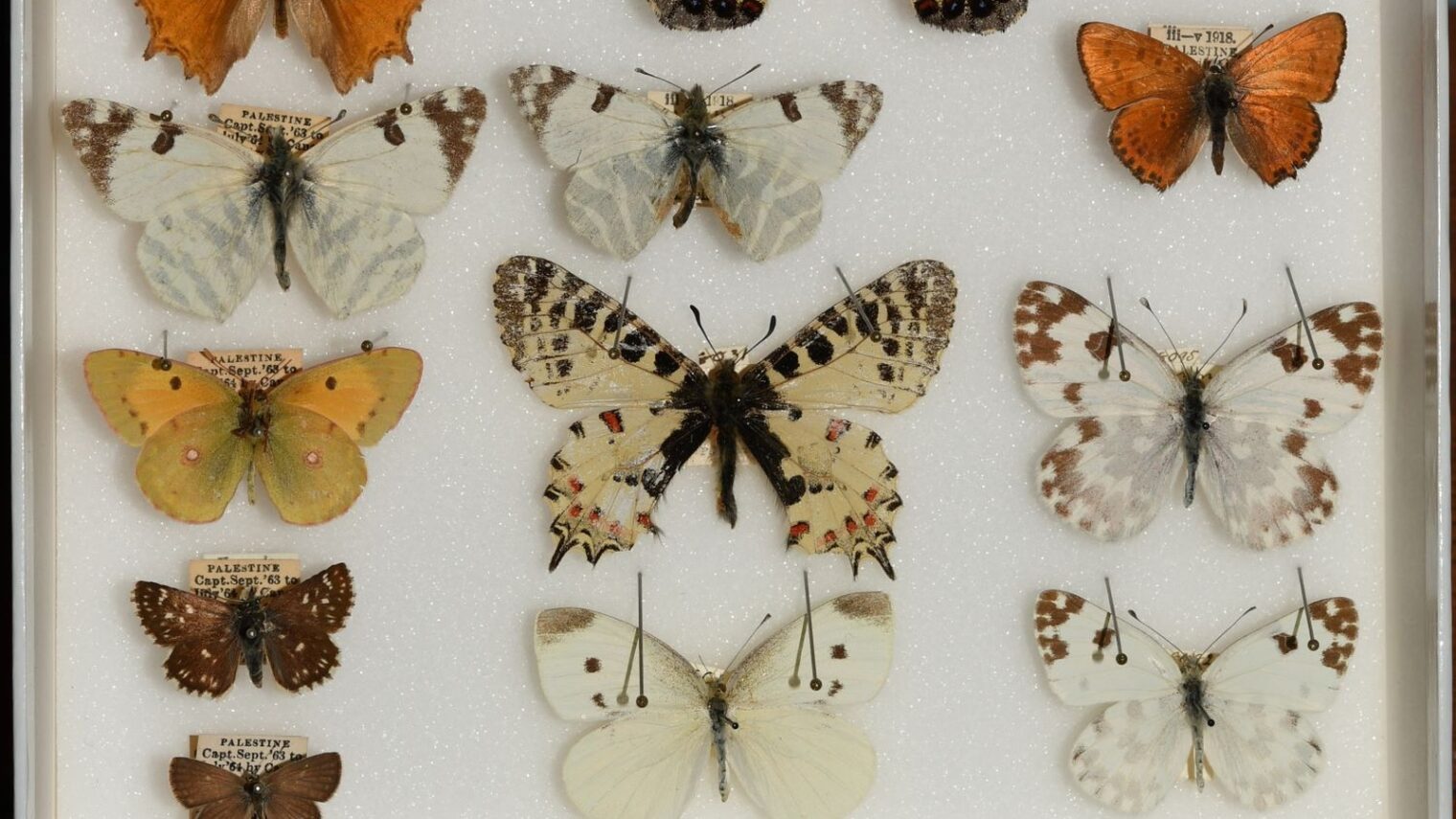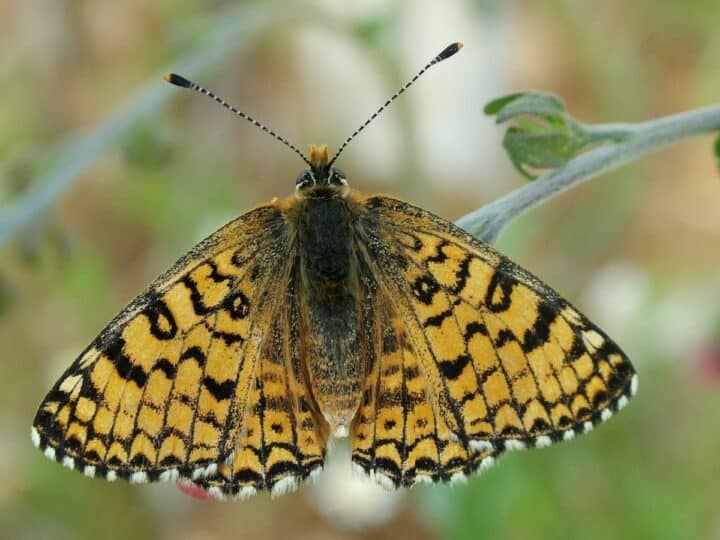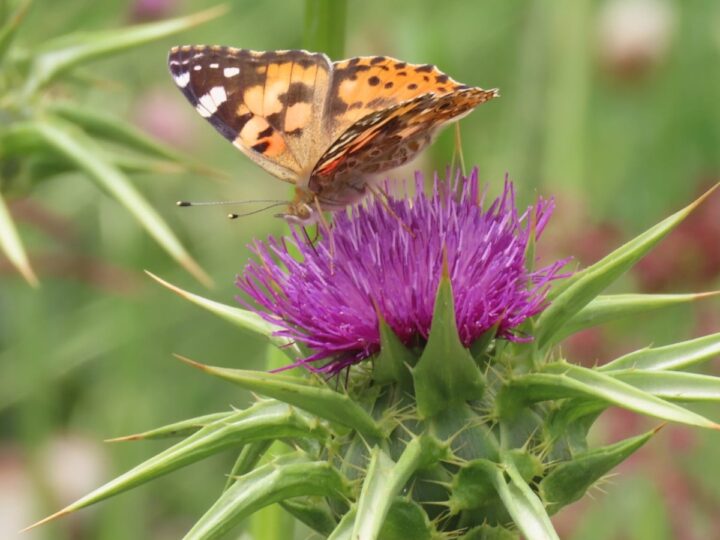A box containing 17 160-year-old butterflies was recently donated by Oxford University Museum of Natural History to the national collections of the Steinhardt Museum in Tel Aviv.
The collection was donated in honor of the Fourth International Congress of Middle Eastern Butterflies, held earlier this month and led by the Israel Lepidopterists Society at the Steinhardt Museum, which hosts one of the biggest collections of fauna and flora in the Middle East.
The butterflies were collected between 1863 and 1865 during the Ottoman era by two delegations of the Anglican Church: one led by Henry Baker Tristram and the other by Octavius Picard-Cambridge.
The Tristam-Cambridge collection was kept at the Oxford museum for years. But recently Dubi Binyamini, president of the Butterfly Association in Israel, visited the museum to review a collection of Archon Apollinus butterflies said to have been collected in the Gaza Strip. This species inhabits the area of Beersheva in southern Israel.
During the visit, Binyamini noticed a note attached to one of the boxes that said “Tristram-Cambridge 1863 – 1865.” He consulted with the curator of the Oxford museum’s collections, James Hogan, and discovered the significance of this collection.

“In our collections in Israel, there are no butterflies from that period,” Binyamini tells ISRAEL21c.
Ultimately — after visiting the museum five times — Binyamini asked the officials there to donate some of the butterflies to their counterparts in Tel Aviv. They obliged.
“This collection represents almost the entire range of species we have in Israel today,” Binyamini says, adding there are currently 156 butterfly species found in the country.
“It has historic and scientific significance. Now, we can examine the DNA of these butterflies from 160 years ago, to see if the species have undergone genetic changes.”
The collection, unfortunately, will not be on display at the museum. “If you expose these butterflies to the daylight, they will start fading. In order to preserve them, they need to stay in the dark,” says Binyamini.
Despite the jubilation, the chief of the Butterfly Association — which is celebrating its 40th anniversary this year – sounded an alarm on the butterfly population. Binyamini says that climate change is negatively impacting the insects and their numbers around the world — including in Israel — continue to drop.
“The butterflies are in freefall; they are disappearing,” he says. “Without butterflies there will be no bees, no pollination, no vegetables, no fruit, no food. That’s an existential threat to humanity.”
















